Paris, like no other city in the world, is linked to the history of art and artistic movements of all kinds, including painting, music, and literature. The city and art form a cohesive whole that anyone who has strolled through its streets will have experienced. In addition to its magnificent architecture, Paris boasts numerous art galleries and bookstores that showcase its rich artistic heritage.
Check out our tours in Paris >
Latin Quarter - the intellectual Mecca of Paris
The Latin Quarter, located on the left bank of the Seine River, is a particularly charming neighbourhood that has been associated with the city's artistic and intellectual heritage for centuries. This area is a home to many iconic landmarks, such as the Sorbonne University, the Pantheon, and the Luxembourg Gardens, all of which have inspired generations of writers, artists, and musicians. Walking through the narrow streets of the Latin Quarter, one can still feel the creative energy that once fueled the likes of Ernest Hemingway, James Joyce, and Pablo Picasso, who all called this neighbourhood home at some point in their lives.
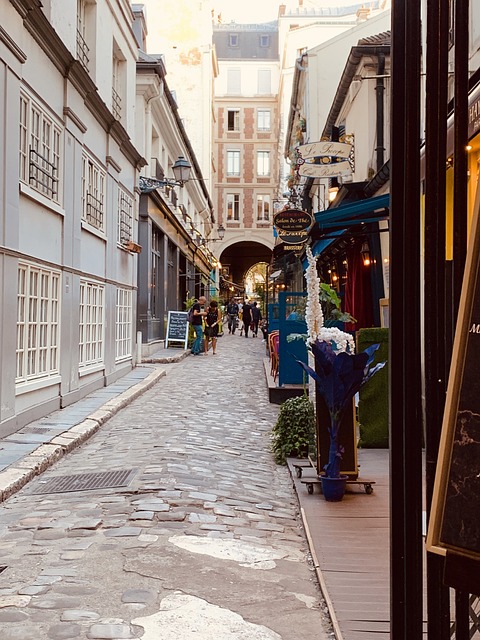
Paris Latin Quarter.

The Pantheon in Latin Quarter in Paris.
Paris during “Roaring Twenties”
During the 1920s, Paris experienced an unprecedented era of cultural and artistic prosperity, also known as the "Roaring Twenties" or the "Années folles" (crazy years). The city drew in numerous artists, writers, and intellectuals, including Picasso, Modigliani, Dali, Hemingway, Joyce, and Scott Fitzgerald, who were attracted by its reputation as a hub of creativity and modernity. In this vibrant cultural milieu, the Latin Quarter played a crucial role in shaping the city's artistic landscape. The 1920s were defined by a single notion: freedom. As the famous writer Heminway wrote "If you are lucky enough to have lived in Paris as a young man, then wherever you go for the rest of your life, it stays with you, for Paris is a moveable feast.”

Clothing style in the 1920s and the "flapper" look.
"Imagine if we travelled to Paris during the 1920s [...] The city was alive with the sound of jazz music, its rhythm pulsating through the streets and luring crowds of young bohemians to the vibrant nightlife. Jazz clubs were teeming with the music of black musicians who had found a welcoming home in the City of Light, while cosy intellectual cafes buzzed with lively debates about art, politics, and philosophy. Fashion was a force to be reckoned with in those days. The "flapper" look, with its short skirts, bobbed hair, and carefree attitude, swept across the city like a wild wind, igniting a sense of freedom and rebellion in the hearts of young women everywhere. Paris in the 1920s - a time of endless possibility and creative energy, where anything seemed possible and the world was full of promise."

Ernest Hemingway, Paris, circa 1924. Photograph in the Ernest Hemingway Photograph Collection, John Fitzgerald Kennedy Library, Boston.
An important artistic movement born in the Latin Quarter at that time was surrealism. It was started in 1919, when two French writers Andre Breton and Philippe Soupault practised automatic writing to activate the unconscious mind by rejecting rationalism and conventional morality. Surrealism wanted to revolutionise the human artistic experience. It tried to balance a rational vision of life with affirmation of the power of the unconscious and dreams.
Movies & books about the Latin Quarter - perfect time machines
If you are interested in the history of the Latin Quarter and want to feel the ambiance of the crazy 1920’ we recommend reading some books, here is our subjective selection:
- "Shakespeare and Company" by Sylvia Beach - Sylvia’s memoir
- "A moveable feast" by Ernest Heminway. This memoir by Hemingway gives a firsthand account of his experiences as a young writer living in Paris during the 1920s, alongside other famous writers like F. Scott Fitzgerald, Gertrude Stein, and James Joyce
- “The Great Gatsby" by F. Scott Fitzgerald. Although it is not set in Paris, this iconic novel depicts perfectly the glamour of the 1920s. There is also great movie by Baz Luhrman starring Leonardo DiCaprio, Carey Mulligan and Joel Edgerton based on the novel
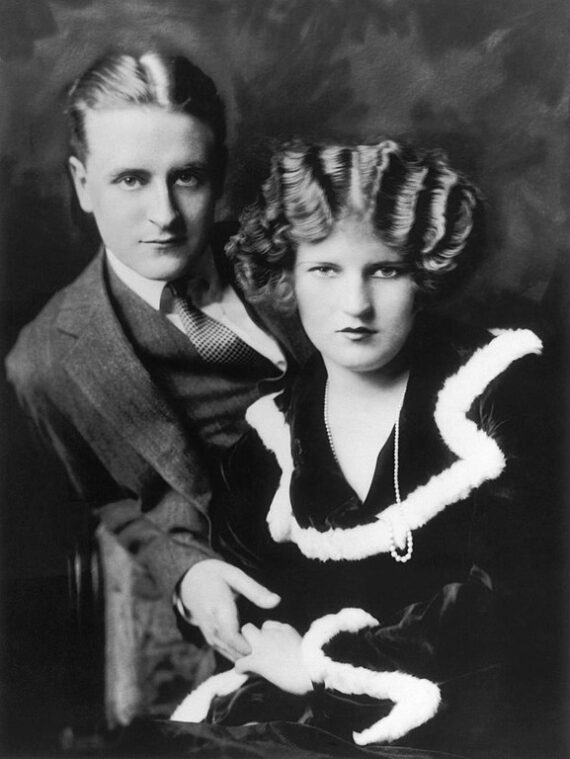
F. Scott & Zelda_Fitzgerald in 1923. Source: Wikipedia.
- "The Paris Wife" by Paula McLain. A great fictionalised novel telling the story of Ernest Hemingway and his first wife Hadley Richards and their life in Paris in the 1920's, featuring the bohemian “Lost Generation”
- "Nadja" by Andre Breton. One of the most iconic works of the French surrealist movementIt with many descriptions of Paris of the era
- "The Movable Feast of the Left Bank: Writers, Artists and Cafe Life in Paris" by John Baxter
Feel like moving back in time to those days? In such case we recommend watching Woody Allen's movie “Midnight in Paris." It attempts to capture the atmosphere of Paris in the 20's. The movie’s main character travels back in time to the 1920's every night meeting and interacting with several famous writers and artists of the time like Heminway, Picasso and Dali among others.
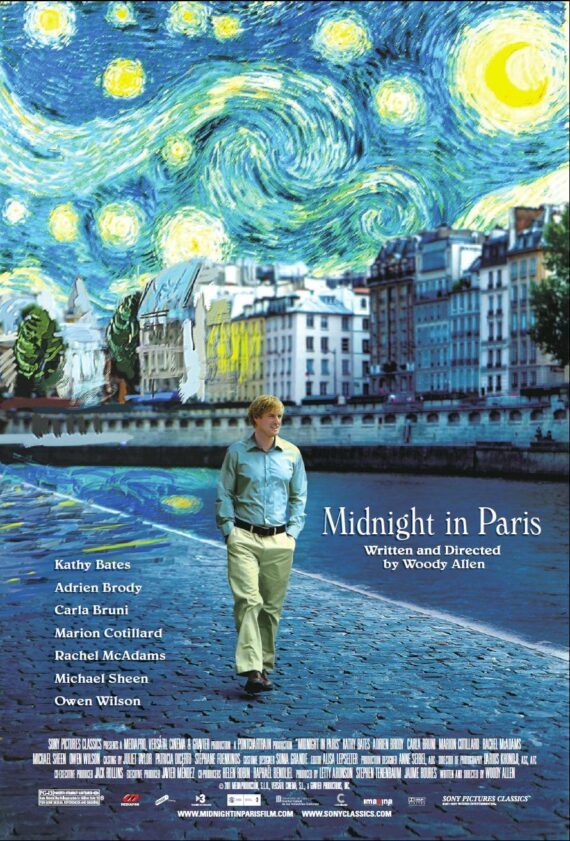
"Midnight in Paris" movie poster.
All the charms of the Latin Quarter - Walkative! tour
If you want to explore the Latin Quarter and don’t miss any of its charms, join our tour around this neighbourhood. During the walk we will show you the locations from movies, as well as cafes and restaurants, monuments and historical places that will make you fall in love with this enchanting neighbourhood. The Latin Quarter is a place where you can feel the artistic pulse of the city and admire Paris' unique elegance.
Our tour starts at one of the most iconic bookstores in the city: Shakespeare & Company, a place you simply must visit during your stay. It is the most famous bookstore in Paris, but what is most fascinating about it is its history. It was opened in 1919 by a woman named Sylvia Beach. In her bookstore she sold Anglo-Saxon literature that was censored in many countries. Because of that Shakespeare & Co became the meeting place of the most famous American writers called the lost generation. It was frequented by: Ezra Pound, the Fitzgerald couple, Gertrude Stein or Ernest Hemingway. The bookstore remained open until 1940 when the Nazis started occupying Paris and Sylvia Beach was forced to close her bookstore. She was Jewish and lesbian and it wasn’t a place for her any longer. Today, this bookstore is not in its original location, but still it is one of the most charming places in Paris.
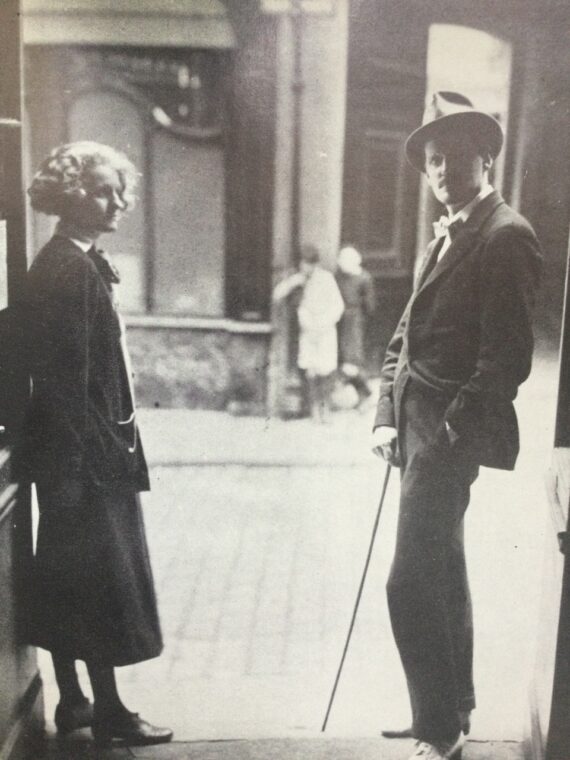
Sylvia Beach and James Joyce.

Sylvia Beach momoirs and the Shakespeare and Company Bookstore.
The artistic vibe of the neighbourhood can be felt especially when visiting numerous cafes and restaurants, such as the famous Cafe du Flore and Cafe Les Deux Magots, the most beautiful cafes in this area, extremely popular among Parisians and tourists alike. Once both of them were popular gathering places for writers, artists, and intellectuals, including Jean-Paul Sartre, Simone de Beauvoir, and Ernest Hemingway. During the post-World War II era, Café de Flore and the nearby Café Les Deux Magots became a hub for existentialists and writers. Both of them are what we call literary cafes. During the tour we will see them as well as the oldest literary cafe in the city: Le procope.
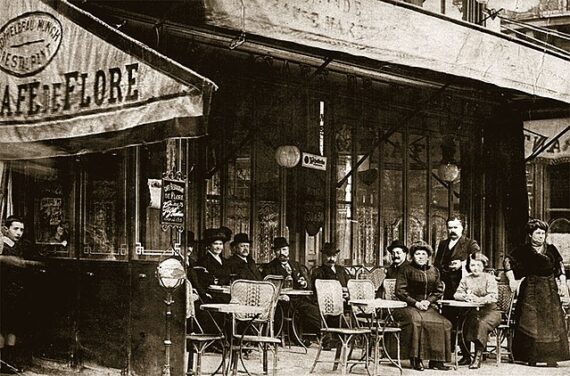
Café de Flore in Paris around 1900.
Like Sylvia Beach, many artists who settled in the Latin Quarter, were forced to emigrate to other countries when the Nazis entered. However, one of the greatest painters of the century decided to stay and work in the city. Who are we talking about? Pablo Picasso of course! Thanks to the help of Gertrude Stein, writer and art dealer, Picasso was able to move to the Latin Quarter. During the tour we will show you the studio where he painted one of the most important works of art of the 20th century: “The Guernica.” We will also discover a hidden street art of another great artist associated with the area - Salvadore Dali.
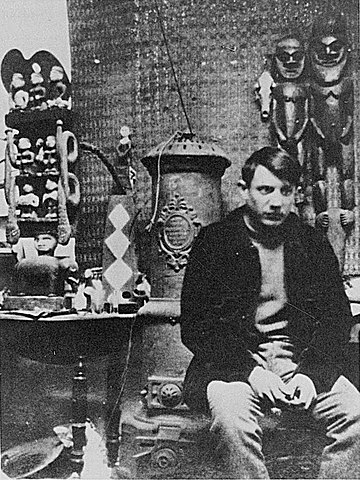
Pablo Picasso in his Montmatre studio in 1908.
The ongoing impact of 1920s
The artistic movement in Paris during the 1920s did not of course take place without controversies, with some critics dismissing the works of artists associated with the movement as "degenerate" or "immoral." Nevertheless, the artistic legacy of the period continues to inspire and influence artists till the present day.
The culture of Paris of the 1920s was characterised by unprecedented creativity, the freedom of experimentation and a rejection of traditional norms and values. It was a time of great intellectual and artistic ferment whose influence is visible in the world of art and culture today.
To discover more, join us on our exploration of the Latin Quarter, a neighbourhood full of artistic and intellectual legacy, a favourite place of many Parisians and tourists alike!









